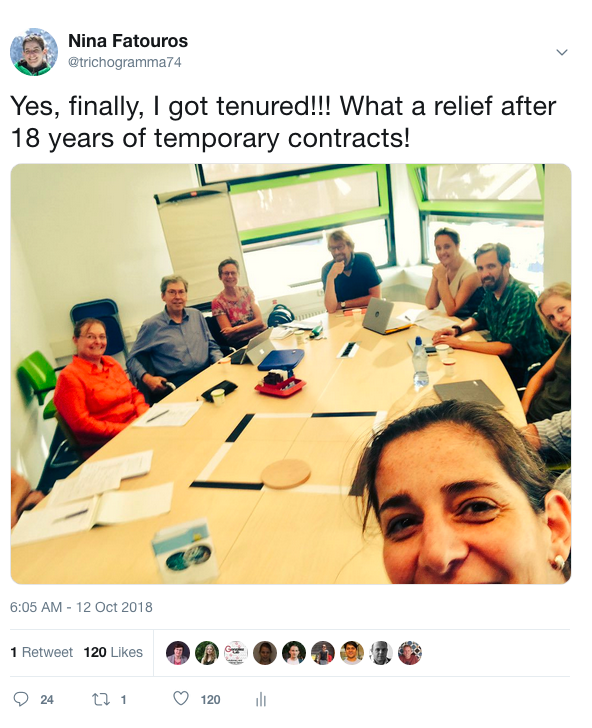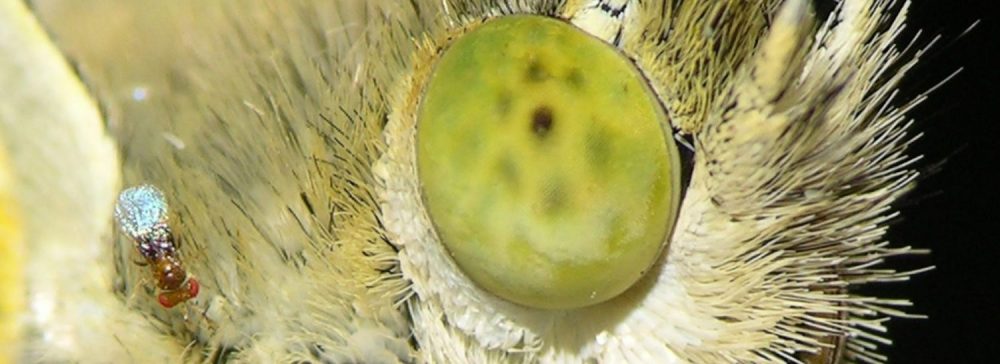Expertise:
Evolutionary, chemical, behavioral and molecular ecology
Degrees:
2006 Dr. rer. nat., Freie Universität (FU) Berlin, Germany
2000 Diploma Biology, FU Berlin
Working experience:
Since 2018 Associate professor (tenured) at Biosystematics group, Wageningen University (WU), The Netherlands
2016 Assistant professor (tenure-track) at Biosystematics group, WU
2016 Humboldt research fellow at Johannes Gutenberg University of Mainz in the group of Prof. Martin Kaltenpoth, Germany
2015 Guest professorship 'Evolutionary ecology of insects' at Institute of Biology, FU Berlin
2014 DFG research fellow in the group of Prof. Monika Hilker Applied Zoology/ Animal Ecology at FU Berlin
2007 Postdoc at Laboratory of Entomology of Prof. Marcel Dicke, WU (DFG Walter Benjamin fellow and NWO VENI fellow)
Grants and scholarships:
2021 Open competition grant (M1) by Dutch Research Council, NWO
2015 Personal grant for talented experienced researchers to develop own research line (NWO VIDI)
2014 Alexander van Humboldt Research fellowship for experienced researchers
2014 DFG research stipend for postdoc by German Research Foundation (DFG SFB 973 'Organismal stress responses: priming and memory')
2014 NWO Aspasia grant to encourage the promotion of female VIDI candidates to an associate professorship
2009 NWO VENI personal grant for talented young researchers ()
2007 DFG personal research fellowship (now Walter Benjamin fellowship)
2006 Exchange grant for young scientists funded by the European Science Foundation (ESF)
2002 Ph.D. talent grant from the Berliner Graduierten Förderung (NaFöG) at FU Berlin
Invited presentations:
2024 Seminar of Laboratory of Phytopathology, WUR, The Netherlands
2023 DCPS seminar, FU Berlin, Germany
2023 SLU Alnarp, Sweden
2023 Chemical Ecology of parasitoids, Florence, Italy (online)
2023 Entomology congress, Bolzano, Italy
2020 Netherlands Annual Ecology Meeting, Lunteren, The Netherlands
2019 Max Planck Institute for Plant Breeding, Cologne, Germany
2018 12th annual EPS workshop on Plant-insect interactions, Leiden, The Netherlands
2018 Dies Natalis 100 years. Unravelling Life: Wisdom and wonder. Wageningen, The Netherlands
2017 Gordon Research Conference Plant-Herbivore Interaction, Ventura, CA, USA
2017 Annual meeting Experimental Plant Sciences, Lunteren, The Netherlands
(Co-)Supervision MSc, PhD and Postdocs:
>10 BSc, >40 MSc, 7 PhDs and 5 Postdocs (2004-present)
Teaching activities:
2023-present: Short Research Project, WUR (coordinator)
2016-present: Webs of Terrestrial Diversity (BSc), WUR (coordinator)
2016-present: Biodiversity of the Netherlands (BSc), WUR (coordinator)
2015: Human Ecology - How microbes affect our life (BSc), FU Berlin (coordinator)
2015-2016: Schreiben naturwissenschaftlicher Texte (Scientific writing) (BSc), FU Berlin (lecturer)








-
Recent Posts
- Dr. Bassetti, congrats – you made it! October 7, 2022
- New publication by Corne van der Linden in Biological Control March 31, 2022
- First thesis chapter published by Niccolo Bassetti in BMC Plant Biology! March 31, 2022
- Yes, finally, Eddie Griese obtained his PhD degree! October 6, 2021
